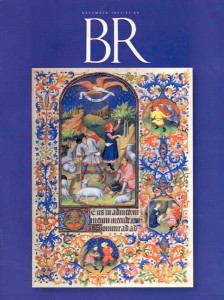Alphabet and Internet
What do both tell you about the Bible?

One of my most vivid memories comes from my first year in graduate school, when I took a class from Professor Frank Cross on the religion of ancient Israel. For the first couple of weeks, there was little discussion of religion. Instead, Cross systematically led us through the development of the Hebrew alphabet. Letter by letter, he carefully and even lovingly drew for us the shapes he knew so well, from the earliest pictograms like the bull’s head aleph to the familiar Aramaic-influenced “square” script.
In response to our obvious bewilderment at why he was “wasting time” on something “irrelevant to the Bible,” Cross explained that the alphabet was a Canaanite invention and that biblical Hebrew was a form of Canaanite. Thus the Bible was a record of this early invention. Then he asked the class to consider why the alphabet should rank alongside the wheel as one of humankind’s greatest inventions.1
Cross’s letter-littered blackboard and his rather Socratic question came to mind recently when I was struck by a formal similarity between a group of ancient Hebrew seals and modern e-mail addresses.
Seals were used to mark ownership or authorship. They were stamped into clay jars to claim ownership of the contents, or were pressed into small lumps of clay (called bullae) used to seal papyrus documents.
Already a library member? Log in here.
Institution user? Log in with your IP address.

